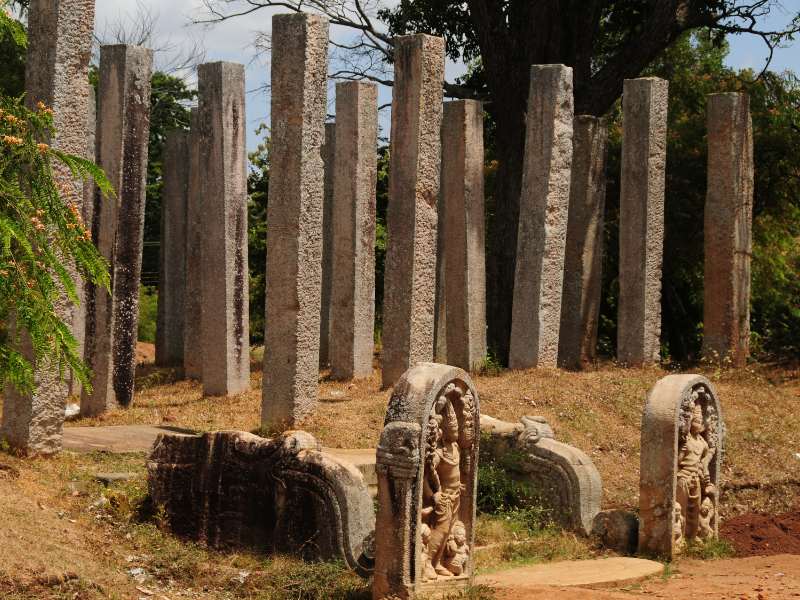Certainly, let’s explore an expanded description of Anuradhapura, an ancient city in Sri Lanka that holds a UNESCO World Heritage Site status:
Anuradhapura – The Sacred City of Sri Lankan Heritage
Anuradhapura, nestled in the Northern Central Province of Sri Lanka, is a city steeped in history, spirituality, and cultural significance. It is one of the country’s ancient capitals and serves as a living museum of Sri Lankan heritage, encompassing a rich tapestry of archaeological wonders, sacred sites, and ancient reservoirs.

Historical Significance:
Anuradhapura was the capital of Sri Lanka for over a millennium, from the 4th century BC to the 11th century AD. During this time, it flourished as a centre of Buddhism, culture, and civilization. It was the seat of power for numerous Sri Lankan kings, who left behind an incredible legacy of architectural marvels.
Sacred Sites:
The city is home to a multitude of sacred sites and temples. The Sri Maha Bodhi, a sacred fig tree believed to have grown from a cutting of the original tree under which the Buddha attained enlightenment, is one of the most venerated Buddhist sites in the world. Pilgrims from around the globe visit this tree, which is over 2,300 years old.
Ruwanwelisaya:
The Ruwanwelisaya Stupa is a colossal white dome-shaped structure, an architectural masterpiece that stands as a symbol of the city’s religious and cultural heritage. It is one of the tallest stupas in Sri Lanka.
Abhayagiri Monastery:
The Abhayagiri Monastery, once a grand monastic complex, was a centre for Buddhist learning and meditation. Today, its archaeological remains offer a glimpse into the ancient monastic life.
Jetavanarama:
The Jetavanarama Stupa, constructed by King Mahasena, was one of the tallest ancient monuments in the world. Although partly in ruins today, it remains an impressive site.
Reservoirs and Hydraulic Engineering:
Anuradhapura boasts a series of ancient reservoirs, such as the Twin Ponds and Tissa Wewa, showcasing advanced hydraulic engineering techniques employed by ancient Sri Lankans for agriculture and irrigation.
Cultural Heritage:
The city’s historical ruins and monuments are a testament to the architectural and artistic achievements of the ancient Sri Lankans. Visitors can admire intricately carved moonstones, guard stones, and ancient inscriptions.
UNESCO World Heritage Site:
In recognition of its historical and cultural significance, Anuradhapura was designated a UNESCO World Heritage Site in 1982, preserving its archaeological treasures for generations to come.
Modern Anuradhapura:
Modern-day Anuradhapura coexists with its ancient heritage. The city’s bustling markets, vibrant festivals, and the convergence of diverse cultures provide a fascinating contrast to its ancient relics.
Anuradhapura invites travellers to embark on a journey through time, offering a unique opportunity to explore the roots of Sri Lankan culture and Buddhism. It’s a place where history, spirituality, and natural beauty converge, providing a profound and enriching experience for those who seek to uncover the wonders of this sacred city.









